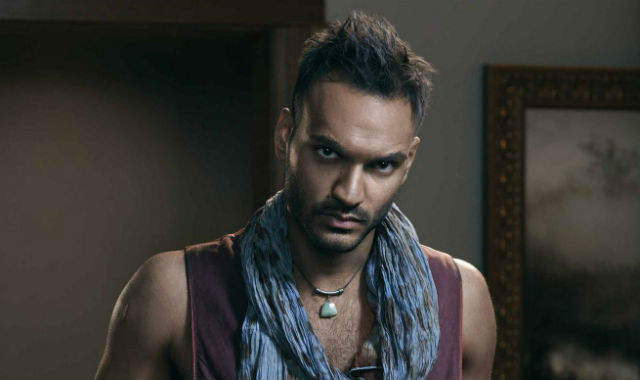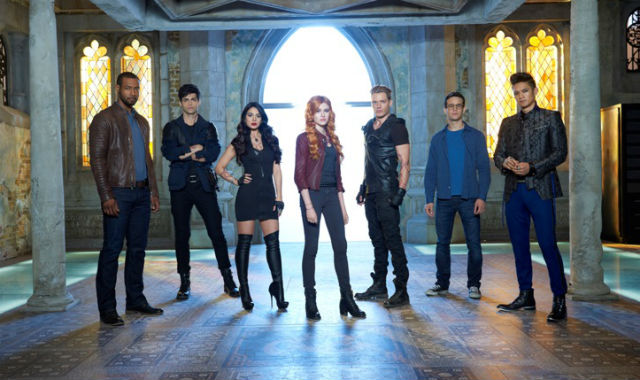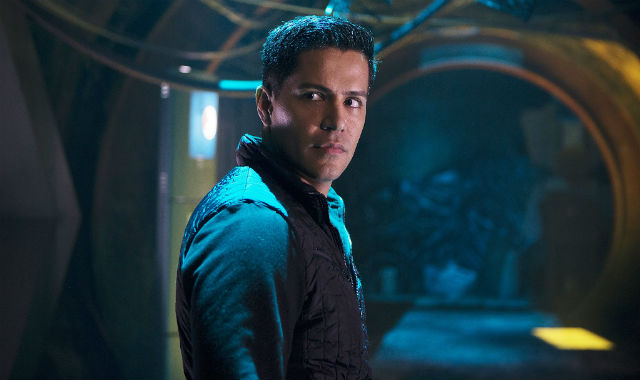5 TV Shows That Benefited from Racebending

Hollywood’s habit of (or insistence on) whitewashing, or casting white actors in roles that are historically nonwhite, has been an issue for as long as the small screen has been around. For almost as long, challenges to the practice have fallen largely on deaf ears. But as criticism of Hollywood’s diversity deficiency has grown, so has the work of hashtaggers and fan bloggers, many of whom vocalize disappointment with certain characters only being visible on screen in a stereotypical light. Or worse, these characters are erased out of their own narratives altogether. These groups have dedicated themselves to holding studios and networks accountable for what is being considered an “invisibility epidemic.” Although that push back hasn’t stopped studios from using the outdated and offensive practice, it has resulted in a slightly different casting trend: racebending.
Originally coined by a founder of Racebending.com, a fan-led site created to protest Avatar: The Last Airbender’s whitewashing, the term is used to describe the alteration of a character’s race in the process of adapting their story for a new medium. While the term is meant to serve as a synonym to whitewashing, it has been adopted as a way to discuss casting actors of color in roles typically played by white characters. In the last several years, racebending has become a practice used more and more to help networks diversify their ensembles and capture a bigger audience. Not only has it resulted in more racial visibility on the small screen, but in a far more unexpected way, racebending can generate deeper and more significant depictions of characters. Here are five shows that have offered their viewers stories both familiar and more nuanced through the use of racebending.
1. The Magicians
Syfy’s tonal shift over the last two years has signaled a move back to an old and endeared focus on high-concept science fiction and fantasy. Lucky for fans, that shift has delivered some of the network’s most critically lauded programming to date. This includes their adaptation of Lev Grossman’s popular adult fantasy trilogy The Magicians. The story follows post-grad and perpetual escapist Quentin Coldwater and Harvard grad school-bound Julia Wicker after they discover the “magic in the wardrobe” is real. Of course, in The Magicians it’s not actually a wardrobe that leads the characters into a world of intoxicating power. Instead it’s a charmed test, which Julia fails but sees Quentin passing with flying colors. On the fast track to becoming a real magician, Quentin must get through living with his roommate, Penny, before he can master the addicting art of magic.
A sharply dressed and roughly charming reluctant antagonist, Penny is the perpetually fed-up foil to Quentin. It’s a characterization that has become pretty stale on white male characters, and it probably would have been here—had the show not cast the talented Indian-American actor Arjun Gupta for the role. This racebend sees the smooth talking, no-shit-taking, cool kid mantle go to a character of color we almost only ever see as a computer geek or cab driver. Though it follows in the mold-breaking style of Gupta’s other roles, rarely do we see actors of Gupta’s background embody an archetype that so completely challenges the stereotypes of his ethnicity. The casting also makes for an interesting illustration of racial micro-aggressions on college campuses. During one episode, The Magicians explores the atmospheric racial insensitivity of some colleges when Penny gets sucked into Quentin’s subconscious. There Penny finds himself reimagined as a janitor with an “Indian” accent. While the show could have turned the moment into an offensive joke, it instead uses the scene to allow Penny a chance to call out Quentin’s racism. As a result, The Magicians illustrates an experience increasingly shared and vocalized by students of color.
![]()
2. Legends of Tomorrow
A spin-off of The CW’s two hit DC Comics series Arrow and The Flash, this superhero team-up centers on the adventures of Rip Hunter, master of time. Legends of Tomorrow follows Hunter as he assembles a team of various heroes and villains, all of whom use his technology to hop between the past, present and future in hopes of stopping the destruction of the world and time itself. The series, which features several major players from the DCU, puts an interesting spin on the most recent incarnation of Hawkgirl. As one of DC’s most famous female heroes, comic fans have come to know the Kendra Saunders incarnation of Hawkgirl as a red-headed winged vixen. In The CW show, multiracial actress Ciara Renée marks the inclusion of a decidedly brown reincarnate.
Hawkgirl’s earliest appearances date back to the 1940s, a time when diversity largely meant brunette, redhead, or blonde. But Hawkgirl is an Egyptian princess who can essentially be reborn into any host. Despite that flexibility, the comics have largely kept the character white, an odd and inaccurate choice considering her cultural heritage. Ciara Renee’s takeover of the mantel wasn’t just a regular racebend, but a righting of one of Hollywood’s most insidious and continuous trends: the whitewashing of Egyptian history and culture. Legend of Tomorrow’s adaptation is also a nod to the growing inclusion of superhero universes, and follows the interesting “red is the new black” casting trend that sees studios racebending red-headed heroines like Spiderman’s Mary Jane, The Flash’s Iris West, and now Kendra Saunders to brown and black women for their live action roles. It also works in a particularly interesting way when you consider how the team time hops, stomping on the notion that white men are the only people who get to (safely) go back in time.
-

-

-

-

-

-

-

-

-

-

-

-

-

-

-

-

-

-

-

-

-

-

-

-

-

-

-

-

-

-

-

-

-

-

-

-

-

-

-

-











































